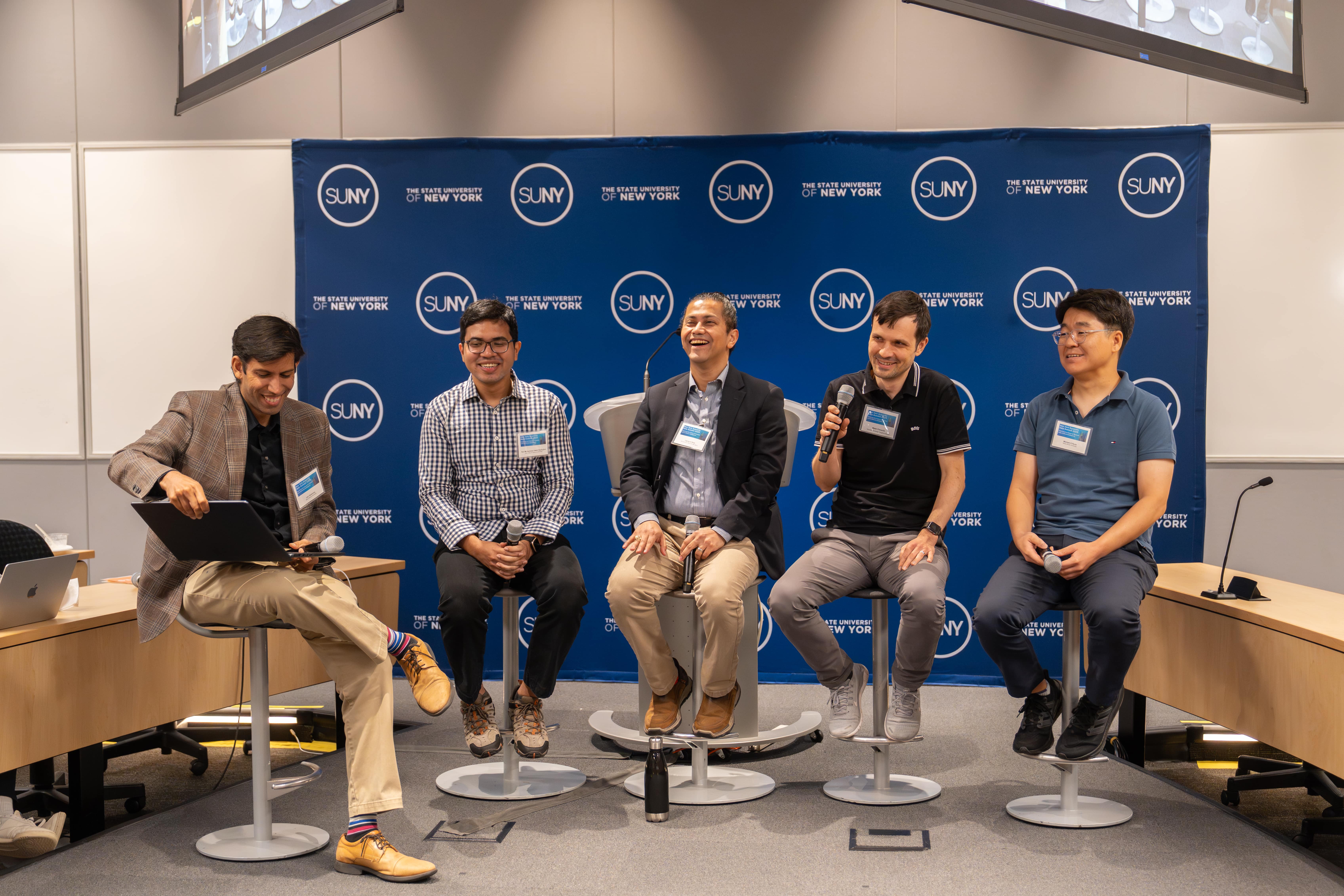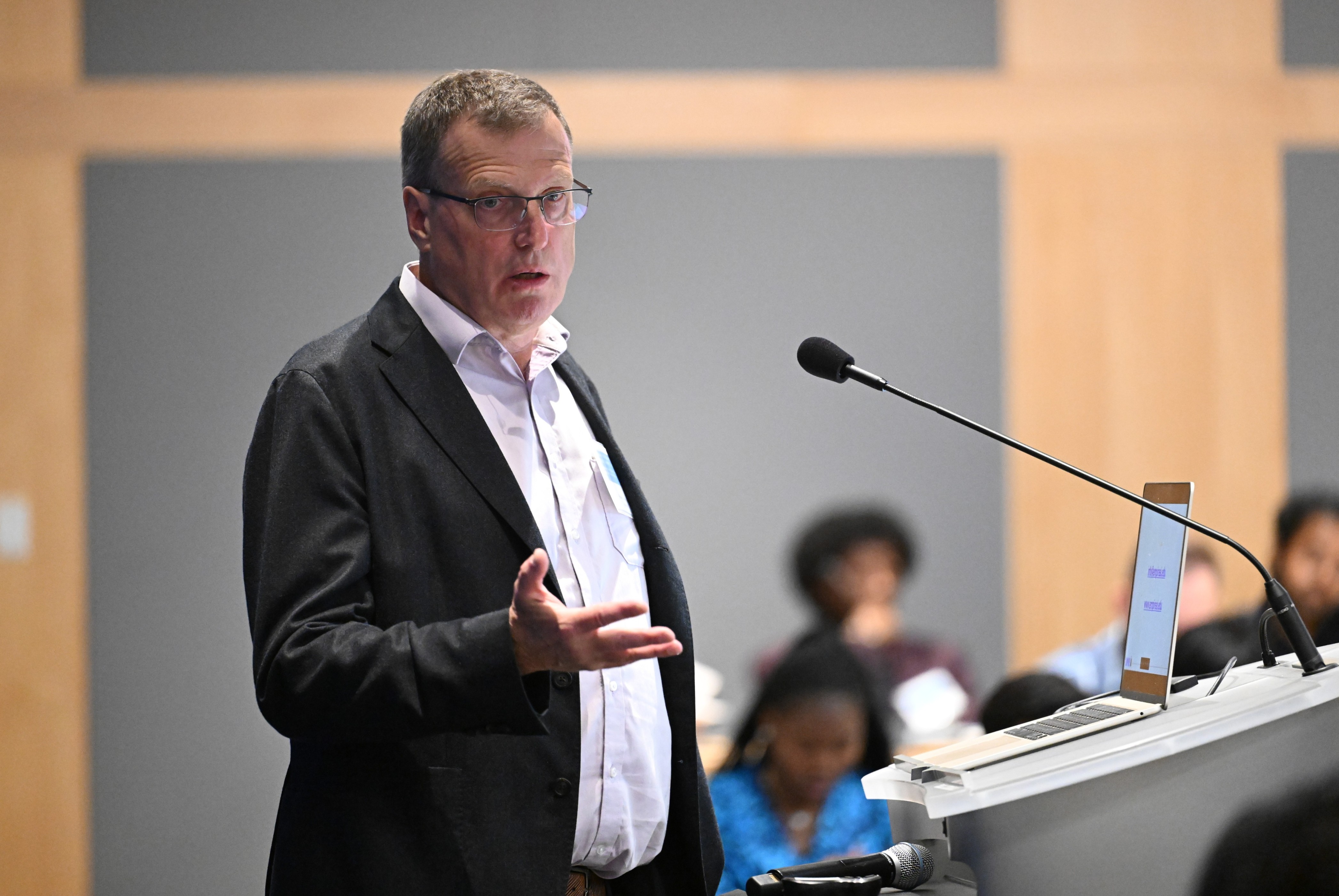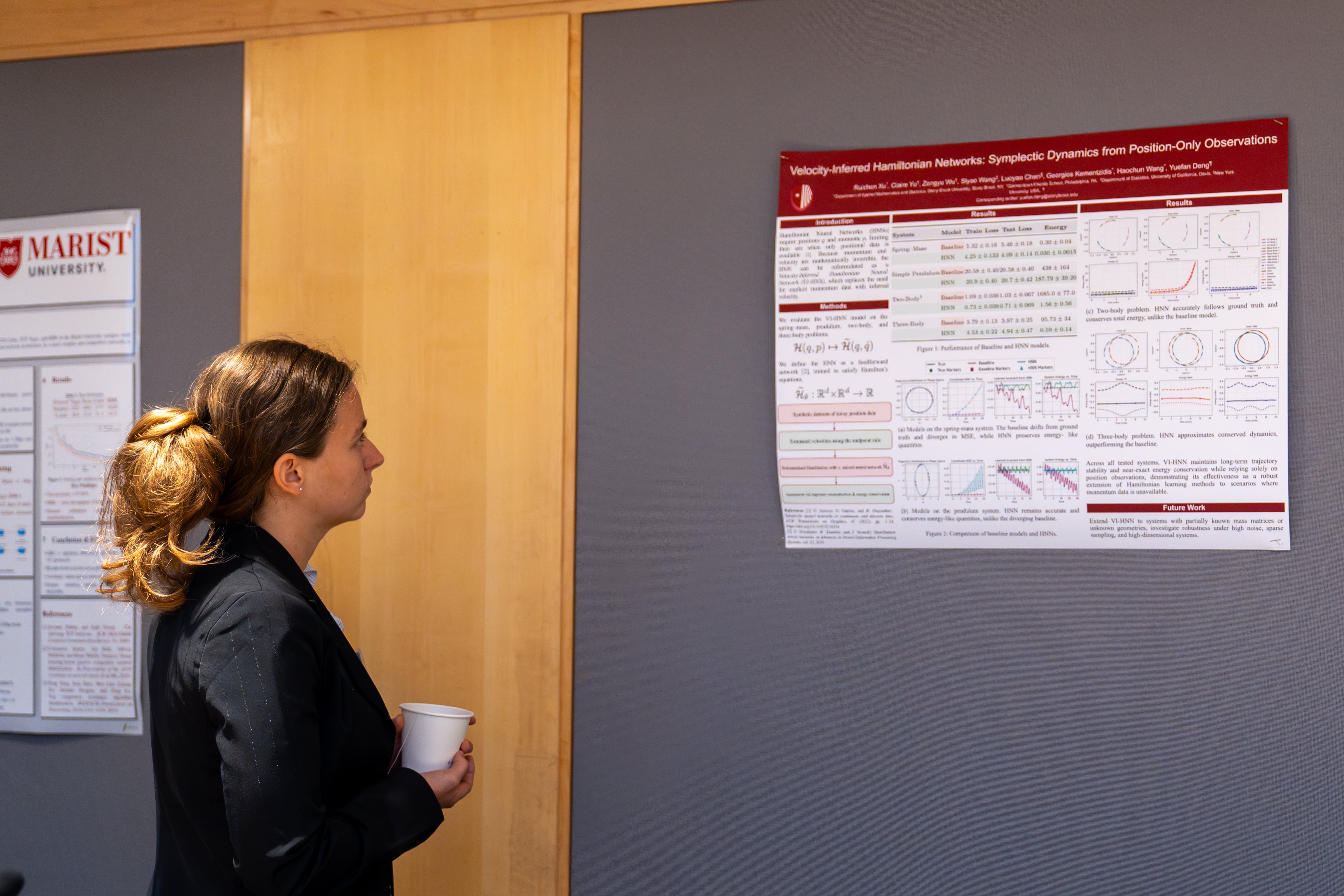
Stony Brook, NY, October 15, 2025 — The future of data-driven science took center stage at the New York Scientific Data Summit (NYSDS) 2025, held September 11–12 at the SUNY Global Center in New York City. Co-hosted by Brookhaven National Laboratory and the Institute for Advanced Computational Science (IACS) at Stony Brook University, the annual summit brought together leading researchers from academia, national labs, and industry to explore how artificial intelligence, machine learning, and robotics are reshaping discovery.
With four thematic tracks — Generative and Agentic AI, Robotics and Embodied Intelligence, AI Applications, and AI Hardware and Infrastructure — the two-day event featured keynotes, technical talks, posters, and panel discussions highlighting cutting-edge advances as well as the challenges of building reliable, explainable, and trustworthy AI for science.
Robert Harrison, director of IACS and interim executive director of the New York State Empire AI Initiative, said, “This year's conference was very exciting. It highlighted the crucial roles of advanced computing technologies such as AI and HPC at the frontiers of scientific discovery. It is wonderful to see how NYSDS has grown since I established it over 10 years ago and its success in its core mission of accelerating data-driven discovery and innovation by bringing together a diverse community of stakeholders.” He delivered a keynote address on Empire AI, outlining the state’s vision for advancing AI research capacity and collaboration.
Lav Varshney, Della Pietra Infinity Professor and director of the AI Innovation Institute at Stony Brook, convened the opening Generative and Agentic AI session and later gave a keynote on “Information Lattices and the Future of AI for Creativity and Discovery,” linking his pioneering work in information theory with new opportunities for discovery at the intersection of human and machine creativity.

Stony Brook Computer Science faculty also showcased their research. Michael Ryoo, Empire Innovation Associate Professor, presented new work on multimodal video models for robot learning, drawing on his experience in robotics at DeepMind and NASA JPL.
Graduate researchers contributed to the program as well. Maximilian Cederholm presented a lightning talk on physics-informed neural networks, while Claire Yu and Albert Ding participated in the poster session, sharing advances in machine learning for dynamical systems and scientific simulation.

The interactive format of NYSDS encouraged cross-disciplinary exchange, with attendees ranging from computational scientists and AI theorists to roboticists and industry leaders. Conversations carried beyond the lecture hall into poster sessions and informal discussions, underscoring the summit’s role as a hub for collaboration across fields.
As Varshney noted in his session, “The promise of AI for science is enormous, but it has to be reliable, efficient, and grounded in the realities of human knowledge. That requires engineers, theorists, domain scientists, and technologists working together.”
With AI and robotics poised to accelerate breakthroughs across domains from materials discovery to biomedical research, NYSDS 2025 underscored not only the progress to date but the urgency of building trustworthy systems for the future. The summit made clear that the next decade of discovery will be shaped by how well scientists, engineers, and technologists work together, and Stony Brook is poised to help bring that change.

